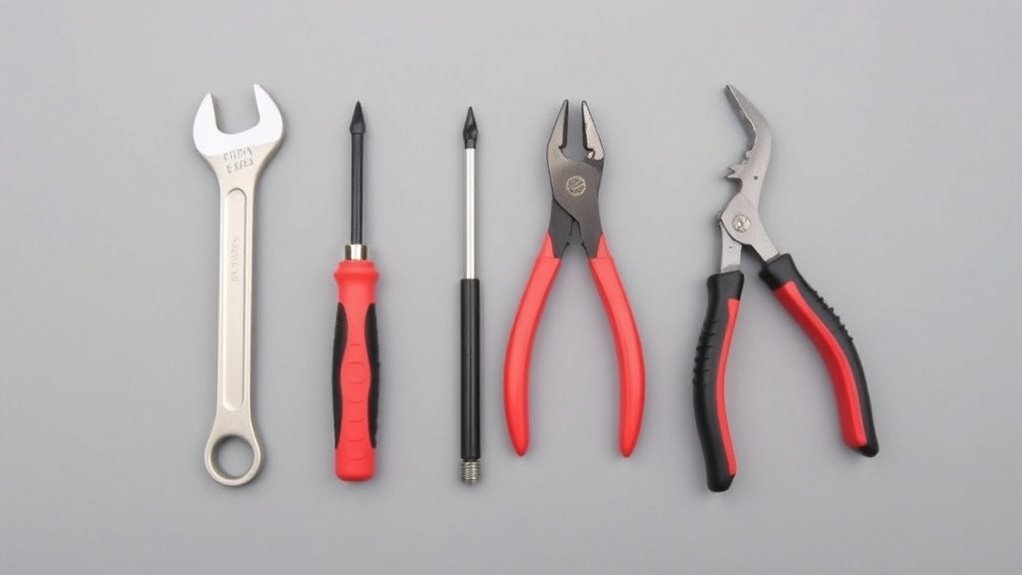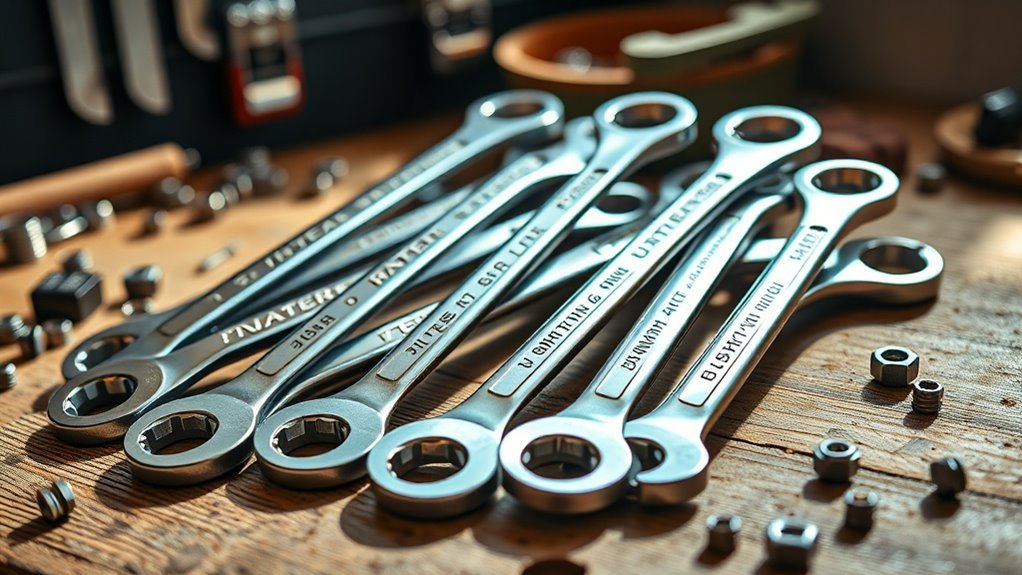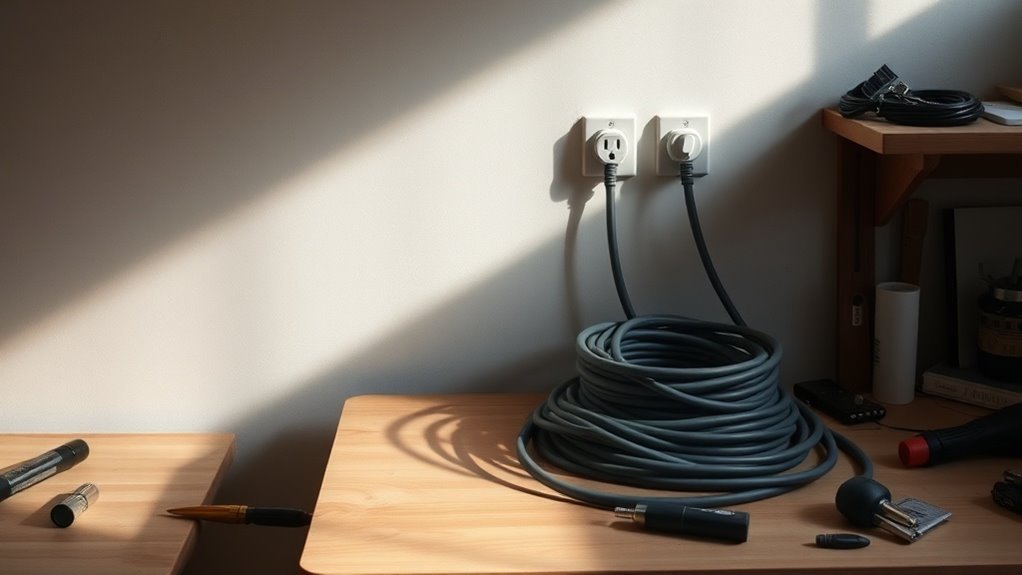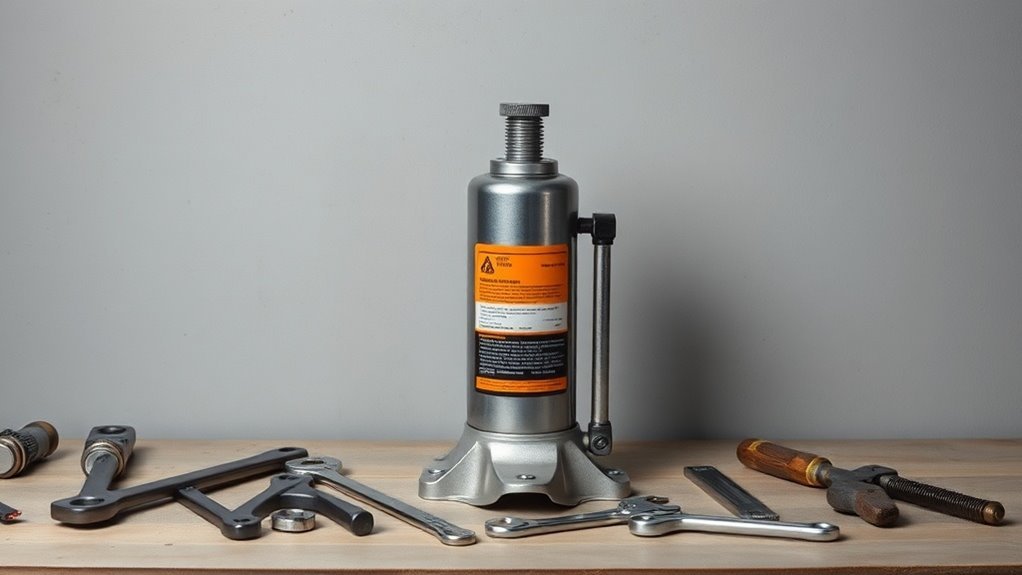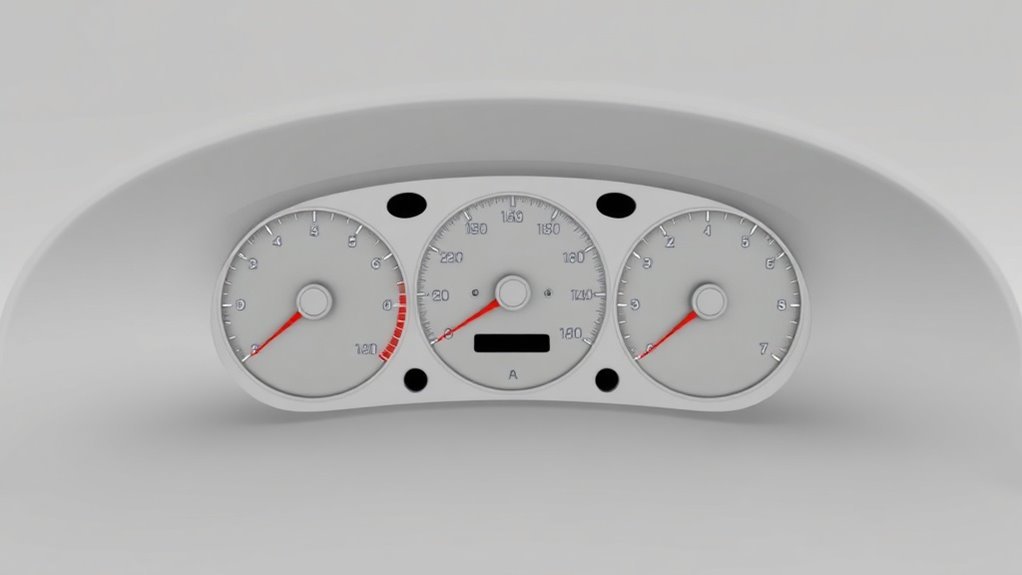History and Evolution of Screwdrivers

The screwdriver’s history traces back to the 15th century, evolving from simple hand tools to sophisticated instruments. Early designs had wooden handles and flat blades, with craftsmanship improving over time. The Industrial Revolution sparked mass production and standardization, addressing mismatches and inefficiencies. Now, screwdrivers come with ergonomic grips, magnetic tips, and interchangeable bits, making them indispensable in various tasks. There’s much more to discover about how these tools shaped our lives and innovations on the horizon.
Key Takeaways
- Screwdrivers originated in the 15th century, initially designed for fastening wooden parts and metal fittings.
- Early designs featured wooden handles and flat or slotted heads, crafted from iron or steel for durability.
- The Industrial Revolution enabled mass production, standardizing shapes and improving screwdriver functionality.
- The lack of standardization in early screw types led to inefficiencies, driving the demand for universal standards.
- Modern innovations include ergonomic handles, magnetic tips, interchangeable bits, and features like ratcheting mechanisms and LED lights for enhanced usability.
Origins of the Screwdriver
Although we often take it for granted today, the screwdriver has a fascinating history that dates back to the Middle Ages. It’s believed that the first screw driver-like tools emerged in the 15th century, designed primarily for fastening wooden parts or metal fittings.
Initially, these early tools were simple hand-held devices resembling a pointed rod or a flat blade, used to turn screws made of iron or brass. As craftsmanship and technology improved, these rudimentary tools paved the way for more sophisticated designs.
You’ll find that the need for efficient fastening mechanisms drove innovation throughout history. From medieval artisans to modern-day manufacturers, the screwdriver has evolved to meet the ever-changing demands of both tradespeople and hobbyists alike.
Early Designs and Materials
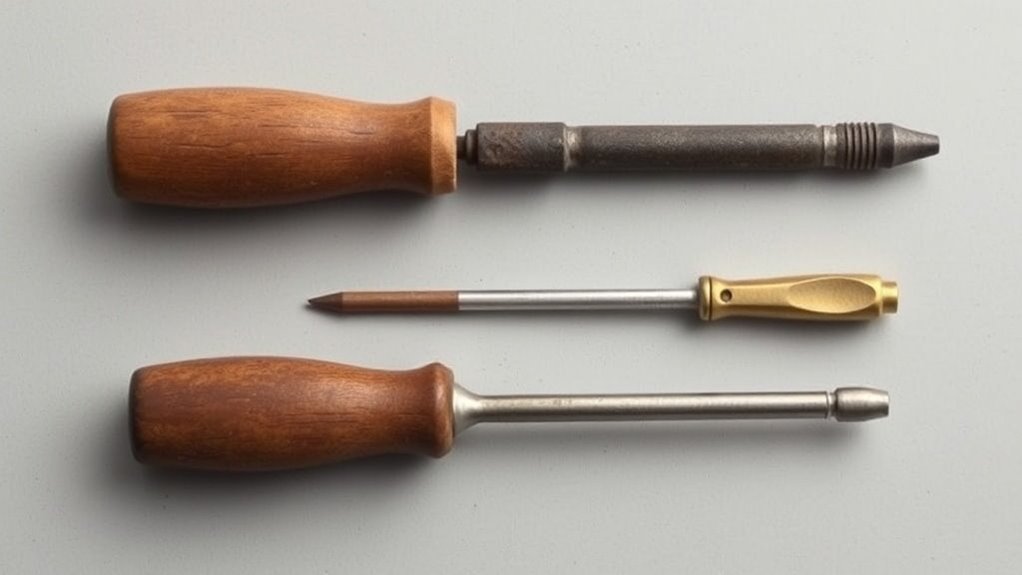
As the demand for more reliable fastening tools grew, early screwdriver designs began to incorporate various materials and shapes that enhanced their functionality.
You’d find handles made from wood, which offered a comfortable grip, while blades were typically forged from iron or steel for durability.
These early screwdrivers often featured flat or slotted heads, aligning with the screws of the time. Craftsmen experimented with different lengths and widths, ensuring they could tackle a range of tasks.
Early screwdrivers showcased flat or slotted heads, as craftsmen varied lengths and widths to master diverse tasks.
Some even added a bit of curvature to the handle, improving torque and control.
As you explore these early designs, you’ll appreciate how these innovations laid the groundwork for the more sophisticated screwdrivers you use today, making work easier and more efficient.
The Industrial Revolution and Mass Production
The Industrial Revolution marked a significant turning point in the production of tools, including screwdrivers, as factories began to employ mass production techniques. You’d see an increase in efficiency, allowing manufacturers to produce screwdrivers at an unprecedented rate. This shift not only reduced costs but also made tools more accessible to the everyday worker.
With the introduction of machinery, precision became key; screwdrivers were produced with standardized shapes, enhancing their functionality. You might find variations in designs catering to specific needs, reflecting a growing understanding of ergonomics and usability.
This period laid the foundation for modern tool production, ensuring that screwdrivers became essential components in various industries while shaping the way we interface with technology today.
The Birth of Standardized Screw Types
As you explore the evolution of screwdrivers, you’ll notice how the need for standardized screw types emerged from early screw designs.
The Industrial Revolution played a significant role in this shift, making mass production more efficient and consistent. Understanding this change helps you appreciate the tools we often take for granted today.
Early Screw Designs
During the early days of mechanical innovation, screw designs were anything but standardized, leading to confusion and inefficiency in various trades.
Craftspeople struggled with inconsistent sizes and shapes, which made it tough to find the right fastener for their projects. You’d often experience:
- Mismatched screws and tools
- Limited compatibility across different manufacturers
- Increased time spent searching for the right fit
- Higher costs due to producing multiple tools
- Frustration that slowed down work processes
These early screw designs showcased the need for a universal standard.
As inventors and tradespeople sought solutions, the principles of standardization began to take hold, paving the way for smoother operations and enhanced efficiency in a rapidly evolving mechanical world.
Impact of Industrialization
With the rise of industrialization in the 18th and 19th centuries, a significant shift occurred in the manufacturing of screws, paving the way for standardized screw types.
As factories emerged, the demand for uniformity grew, allowing for easier assembly and manufacturing processes. You’d notice that screws were produced with specific dimensions and shapes, making it simpler to create compatible tools, like screwdrivers.
This standardization reduced waste and improved efficiency. When you grab a screwdriver, you benefit from this advancement—knowing it’ll fit the screws you encounter.
The introduction of standardized screw types not only simplified craftsmanship but also contributed to the mass production of numerous products, ensuring accessibility and functionality in everyday items.
Innovations in Screwdriver Design
Although the basic concept of a screwdriver has remained consistent over the years, innovations in design have significantly enhanced their functionality and user experience.
Innovations in screwdriver design have transformed functionality, enhancing both user experience and efficiency in everyday tasks.
You’ll find that modern screwdrivers incorporate features that make them more efficient and user-friendly.
- Ergonomic handles reduce hand fatigue during use.
- Magnetic tips hold screws in place and prevent drops.
- Interchangeable bits allow for diverse applications without multiple tools.
- Ratcheting mechanisms speed up the driving process.
- Built-in LED lights illuminate dark workspaces.
These advancements not only improve efficiency but also provide a more enjoyable experience.
As you navigate your tasks, these innovative designs can transform how you approach projects, making even the simplest jobs feel more streamlined and effective.
Modern Applications and Future Trends
Today’s screwdrivers aren’t just tools; they’re essential companions in various fields, from DIY projects to professional construction.
You’ll find electric and magnetic screwdrivers gaining popularity for their efficiency and ease of use, especially in assembly lines and tech repairs. Enhanced ergonomic designs guarantee more comfortable handling, reducing fatigue during extended tasks.
As automation rises, you’ll see smart screwdrivers equipped with sensors that adjust torque levels, making your projects safer and more efficient. Eco-friendly materials are also on the horizon, appealing to the environmentally conscious consumer.
Looking ahead, the integration of augmented reality might guide you in repairs, revolutionizing the way you interact with your tools. In a parallel manner to how gyroscopes are used in navigation systems, the future of screwdrivers promises to make your jobs simpler and more innovative.
Questions
What Are the Most Popular Screwdriver Brands Today?
Some of the most popular screwdriver brands today are Craftsman, Klein Tools, Wera, and DeWalt. You’ll find these brands widely trusted for their durability, performance, and ergonomic designs, making them ideal for both professionals and DIY enthusiasts.
How Do I Choose the Right Screwdriver for My Project?
“Measure twice, cut once.” To choose the right screwdriver, consider screw type, head design, and length. Match your tool to the task for the best fit, ensuring ease and efficiency during your project.
What Are Common Screwdriver Maintenance Tips?
To maintain your screwdrivers, keep them clean and free of debris. Regularly check for wear on tips, store them in a dry place, and never use them as prying tools to prevent damage.
Can Screwdrivers Be Used for Purposes Other Than Screws?
Sure, screwdrivers can be used for more than just screws! Ever tried using one as a pry bar or to open paint cans? Just be cautious, or you might end up damaging the tool or the object.
What Safety Precautions Should I Take When Using Screwdrivers?
When using screwdrivers, always wear safety goggles, keep your workspace clutter-free, and make certain you’re using the right type of screwdriver for the job. Don’t apply excessive force, and store your tools properly after use.
Conclusion
In wrapping up the history of screwdrivers, it’s fascinating to note that there are over 100 varieties of screws used worldwide today. As you can see, each innovation in screwdriver design reflects the needs of its time, from early hand tools to today’s electric versions. With advancements continuing to emerge, who knows what the next generation of screwdrivers will look like? One thing’s for sure: they’ll keep evolving along with our ever-changing world.

